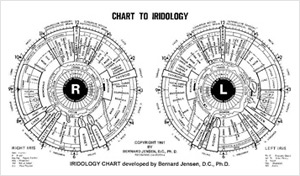 Iris diagnosis is a method of analyzing the health status of humans and even animals by studying the very individual colours, marks and signs in the iris, pupil and sclera of the eye. No two people have exactly the same iris markings – even identical twins – so iridology is much like a unique thumbprint of the body’s inner health.
Iris diagnosis is a method of analyzing the health status of humans and even animals by studying the very individual colours, marks and signs in the iris, pupil and sclera of the eye. No two people have exactly the same iris markings – even identical twins – so iridology is much like a unique thumbprint of the body’s inner health.
Through the optic nerve, the iris reflects every tissue and organ in the body. A trained iridologist is able to see predispositions towards disease and identify nutritional deficiencies. These predispositions are able to be identified in the iris long before disease develops to the point where it can be recognized by conventional x-rays or blood tests. Where diseases have already developed, iridology is particularly helpful in identifying the underlying causes.
The practice of iridology can be traced back over 130 years to a Hungarian doctor, Ignatz von Peczely, who observed a black mark in the iris of an owl that had broken its leg being replaced over time by white lines as the leg healed. He believed that the black line represented the leg. Over time, he examined hundreds of irises in his patients and began to map parts of the iris related to common health issues and thus organ systems.
At first, Peczely’s ideas were dismissed by his collegues but then in 1890, a Swedish clergyman by the name of Nils Liljequist collated Peczaly’s ideas into a book titled ‘Eye Diagnosis’ which became a popular text. Modern iridology has evolved from these early studies to become a precise and scientifically validated therapy used by practitioners who want to look for deeper causes of symptoms in the people they are treating.
